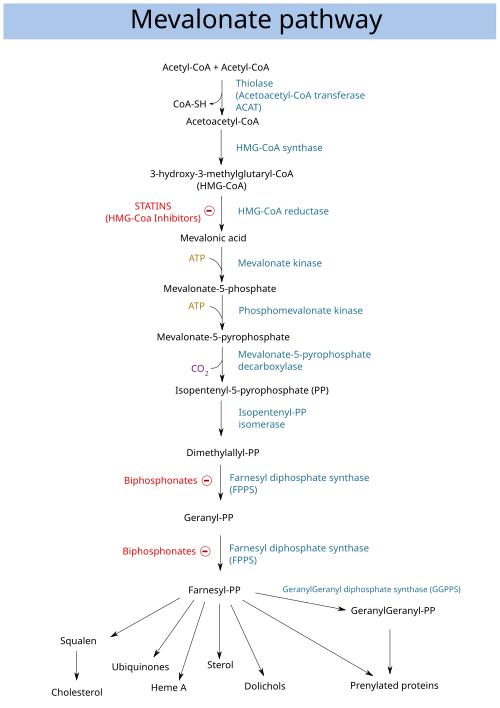Mevalonic acid

| |||
| |||
| Names | |||
|---|---|---|---|
| Preferred IUPAC name
(3R)-3,5-Dihydroxy-3-methylpentanoic acid | |||
| Identifiers | |||
3D model (
JSmol ) |
|||
| ChEBI | |||
| ChemSpider | |||
| KEGG | |||
PubChem CID
|
|||
| UNII | |||
CompTox Dashboard (EPA)
|
|||
| |||
| |||
| Properties | |||
| C6H12O4 | |||
| Molar mass | 148.158 g·mol−1 | ||
Except where otherwise noted, data are given for materials in their standard state (at 25 °C [77 °F], 100 kPa).
| |||
Mevalonic acid (MVA) is a key
statins (which lower levels of cholesterol) stop the production of mevalonate by inhibiting HMG-CoA reductase.[1]
Chemistry
Mevalonic acid is very soluble in water and polar organic solvents. It exists in equilibrium with its lactone form, called mevalonolactone, that is formed by internal condensation of its terminal alcohol and carboxylic acid functional groups. Mevalonolactone acts to correct statin linked myopathy and limb girdle muscular disease caused by HMG co-A reductase mutation.[2]
Biology
Mevalonic acid is a precursor in the
chiral and the (3R)-enantiomer
is the only one that is biologically active.



